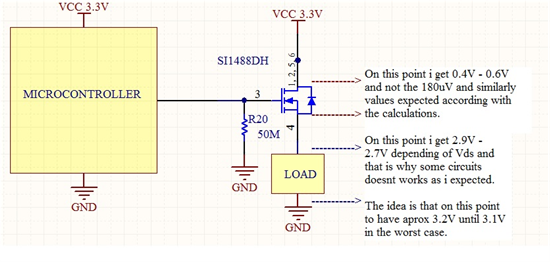I'm having some troubles using Mosfets as switches.
The main idea is that i have to Turn ON/OFF some circuits as a Flash Memory, Leds, MAX3223, an so on; i have 3.3V to feed all the circuits which are controlled by a Microcontroller.
By this way, my problem is that the Voltage Drops over 300mV and more and some IC doesnt work correctly. Because for example, at the Drain pin of the Mosfet is not 3.3V if not 2.9V and this is unuseful.
I would like you help me to resolve this, a way where the dropout doesnt be greater than 0.1V 100mV.
Thanks For Your Help!
-
Ask a related question
What is a related question?A related question is a question created from another question. When the related question is created, it will be automatically linked to the original question.



